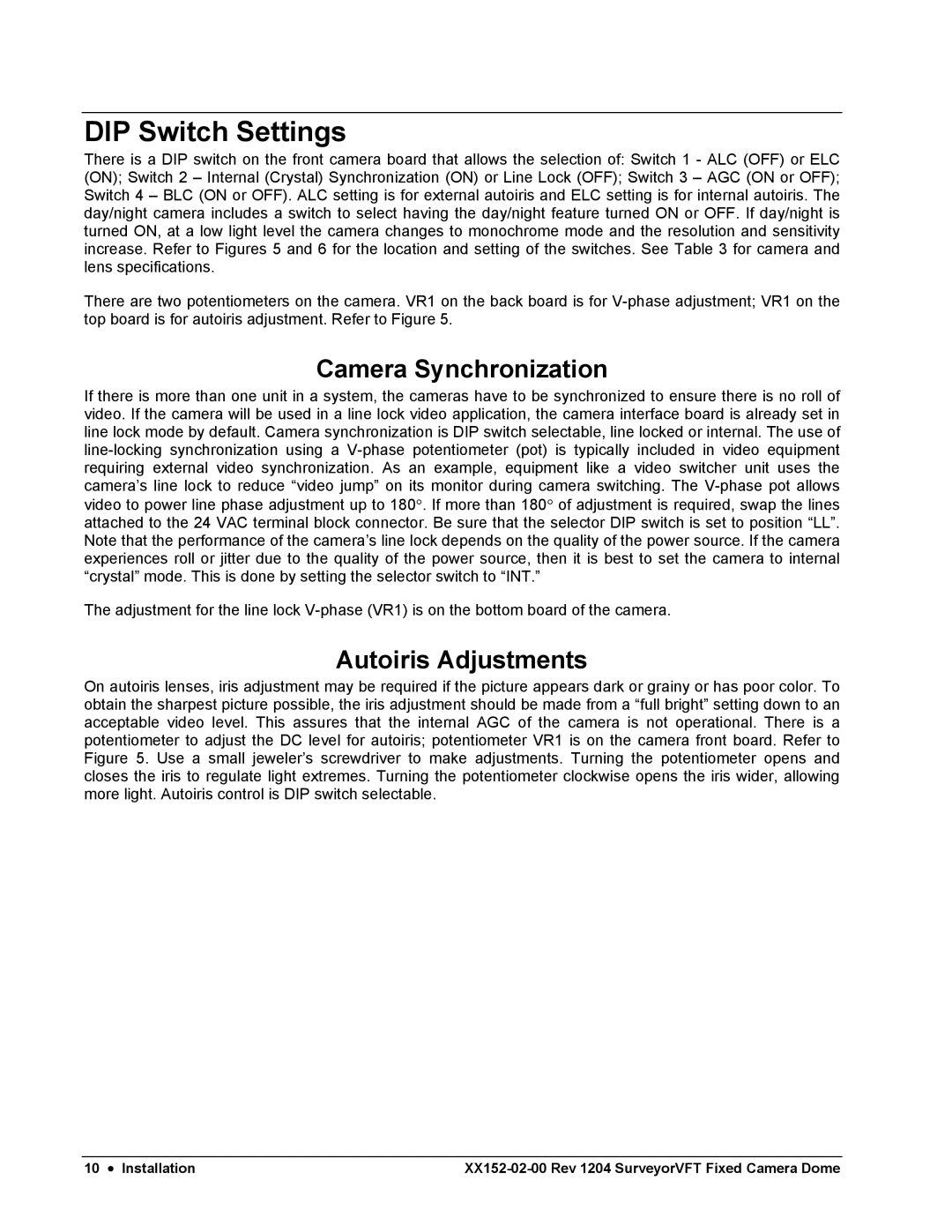DIP Switch Settings
There is a DIP switch on the front camera board that allows the selection of: Switch 1 - ALC (OFF) or ELC (ON); Switch 2 – Internal (Crystal) Synchronization (ON) or Line Lock (OFF); Switch 3 – AGC (ON or OFF); Switch 4 – BLC (ON or OFF). ALC setting is for external autoiris and ELC setting is for internal autoiris. The day/night camera includes a switch to select having the day/night feature turned ON or OFF. If day/night is turned ON, at a low light level the camera changes to monochrome mode and the resolution and sensitivity increase. Refer to Figures 5 and 6 for the location and setting of the switches. See Table 3 for camera and lens specifications.
There are two potentiometers on the camera. VR1 on the back board is for
Camera Synchronization
If there is more than one unit in a system, the cameras have to be synchronized to ensure there is no roll of video. If the camera will be used in a line lock video application, the camera interface board is already set in line lock mode by default. Camera synchronization is DIP switch selectable, line locked or internal. The use of
The adjustment for the line lock
Autoiris Adjustments
On autoiris lenses, iris adjustment may be required if the picture appears dark or grainy or has poor color. To obtain the sharpest picture possible, the iris adjustment should be made from a “full bright” setting down to an acceptable video level. This assures that the internal AGC of the camera is not operational. There is a potentiometer to adjust the DC level for autoiris; potentiometer VR1 is on the camera front board. Refer to Figure 5. Use a small jeweler’s screwdriver to make adjustments. Turning the potentiometer opens and closes the iris to regulate light extremes. Turning the potentiometer clockwise opens the iris wider, allowing more light. Autoiris control is DIP switch selectable.
10 • Installation |
